Minimalism isn’t just about having fewer things; it’s about being intentional with what you bring into your home. It’s a lifestyle choice rooted in calm, clarity, and curated beauty. And when it comes to your living room—the heart of connection and comfort—it’s the perfect place to strip away the excess and spotlight what truly matters.
But minimalist doesn’t mean cold, bland, or clinical. With the right balance of softness, texture, and personality, a minimalist living room can feel cozy, inviting, and beautifully personal. Here’s my curated guide to styling a minimalist living room that feels light and lived-in.
1. Choose a Neutral Color Palette

A calm space starts with a calm palette. I like to keep the color scheme to around three core tones—think warm whites, soft grays, sandy beiges, or even gentle taupes. These colors instantly brighten the space and make it feel more open.
A neutral palette sets the tone and lets your furnishings and textures do the talking. It helps the room feel airy and grounded all at once.
Try painting the walls in a warm white or a soft beige for that “fresh but cozy” vibe. If you want a little more interest, add a muted accent wall in clay, olive, or charcoal. Keep large pieces (like your sofa or rug) in light, neutral shades and bring in depth with accent pillows or throws.
2. Embrace Natural Elements

One thing that brings the soul into a minimalist space? Nature. Think organic shapes, natural materials, and warm, earthy finishes.
Without natural elements, minimalism can quickly veer into sterile. Wood, linen, leather, and stone bring texture, warmth, and that grounded feeling we’re after.
A rustic wooden coffee table or a cane armchair adds charm without visual clutter. Look for rounded or curved furniture to soften the space—like a circular coffee table or a curved-edge sofa. Incorporate woven baskets, jute rugs, or ceramic vases to layer in tactile, earthy elements.
3. Go for Multifunctional Pieces
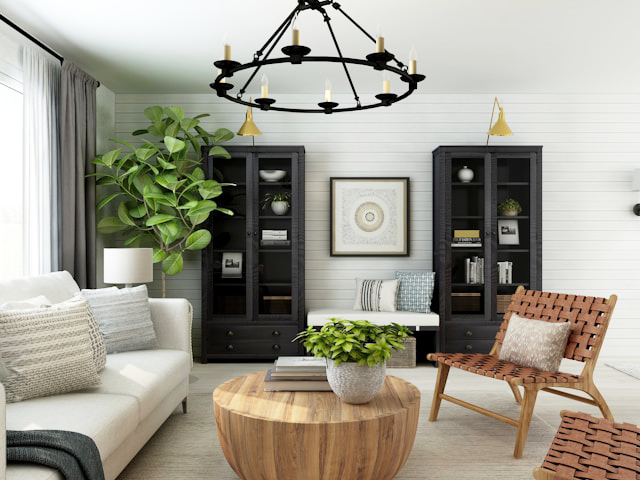
Minimalist living means less—but smarter. Every piece should earn its spot. The fewer items you have, the more intentional your space becomes. Multifunctional pieces keep things tidy without compromising on style.
Choose a storage ottoman that doubles as extra seating, opt for a side table with hidden storage, or a media console with clean lines and drawers. You can also try nesting tables; they’re a chic way to save space and stay versatile.
4. Introduce Texture and Layering
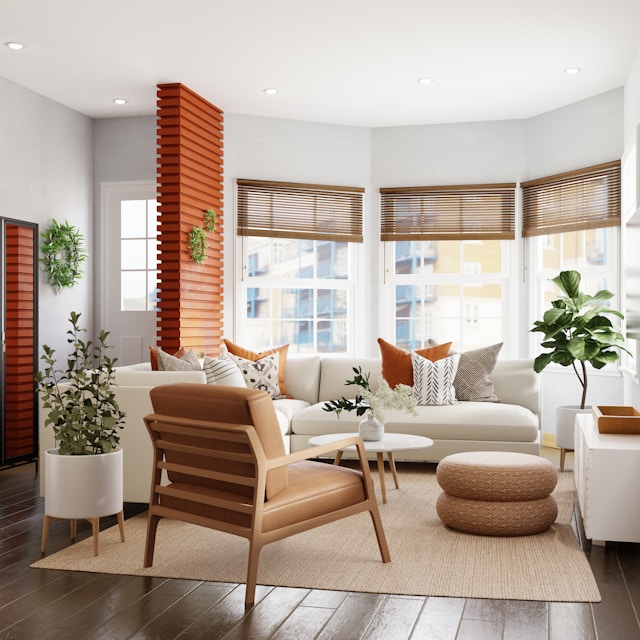
Yes, minimalist spaces can still have layers! Texture keeps your space from falling flat and adds that lived-in charm. Texture is the secret to keeping things interesting when your color palette is subdued. It brings coziness and visual depth.
Use throw pillows in bouclé, velvet, or woven cotton. Or drape a chunky knit throw over the couch. You can also try a high-pile or woven area rug to ground the room and warm up hard floors.
Add contrast by mixing smooth surfaces (like glass or metal) with softer ones (like linen or rattan).
5. Maximize Natural Light

Let the sunshine in! Light is a minimalist’s best friend. Natural light expands your space, highlights textures, and creates that airy, open feeling we all crave.
Keep windows as unobstructed as possible; skip heavy curtains. Opt for sheer linen panels that filter the light softly. Use mirrors to bounce light around.
6. Curate Minimal Accessories

Accessories in a minimalist space should feel thoughtful. Every piece should have a purpose—either visually or functionally. That doesn’t mean bare shelves; it means curated shelves. Group decor in odd numbers (like 3 or 5) and vary the heights for visual interest.
Styling Tips:
Choose one or two statement pieces of art or wall decor. Go for abstract prints, line drawings, or something handmade. Stick to accessories that reflect your palette and serve a purpose—like a sculptural vase, a neutral-toned candle, or a beautiful tray.
7. Add a Touch of Greenery
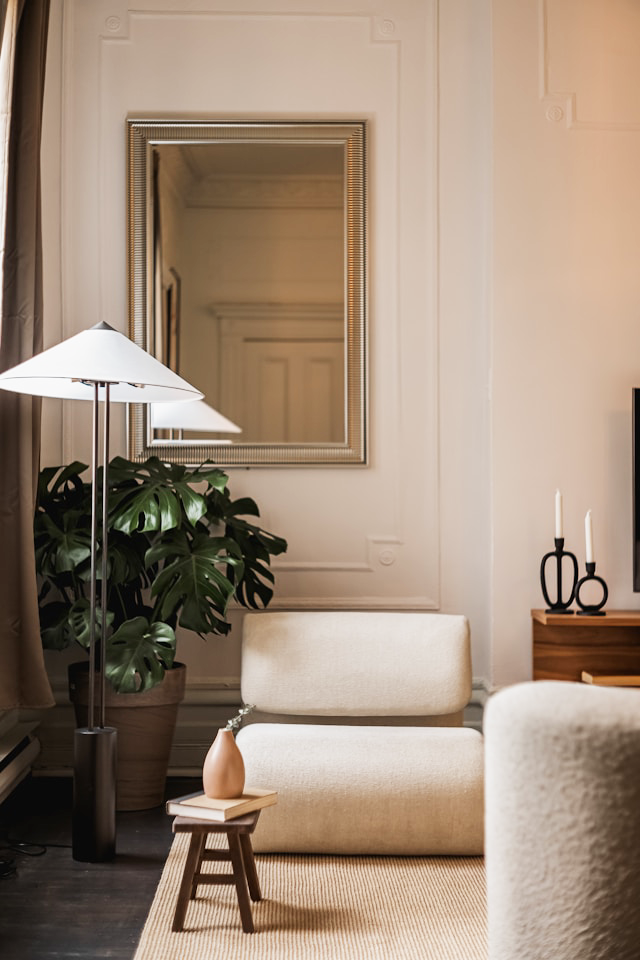
Plants breathe life into a space without clutter. It connects your space to nature, adds color without chaos, and softens hard lines. Use planters in matte ceramics, wood, or neutral tones to stay cohesive.
Go for low-maintenance plants like snake plants, ZZ plants, or pothos. Style one or two medium plants in corners or on low furniture, or opt for a small cluster of succulents on a shelf.
8. Keep Surfaces Clear
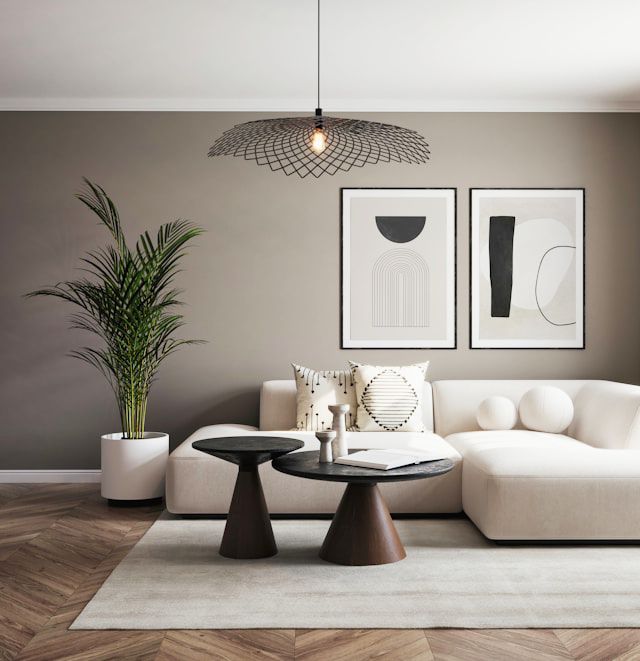
You know that feeling when everything’s put away and your surfaces are clean? That’s the minimalist magic.
Visual clutter can overwhelm the senses. Open space feels peaceful—and that’s exactly what we’re going for. Stick to just one or two decor pieces per surface, or use trays to group small items like remotes or candles.
Make it a habit to do a quick surface sweep every evening.
9. Add Smart Storage
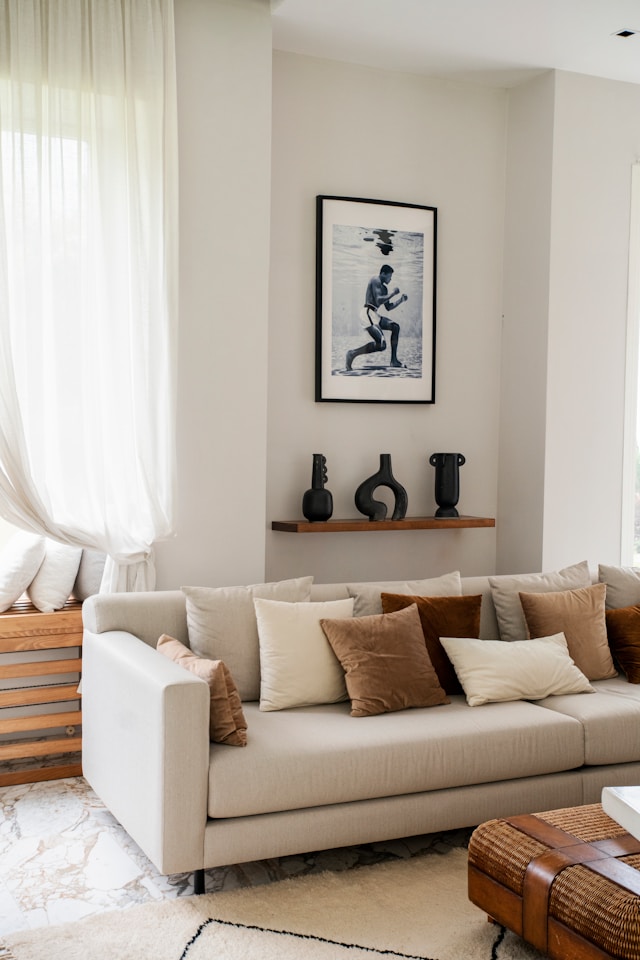
Storage is your minimalist MVP. It lets you keep life tucked away while your space stays calm and clutter-free.
Minimalism isn’t about having nothing—it’s about having what matters and keeping the rest out of sight.
Invest in closed storage like cabinets or media consoles with drawers, and use baskets or boxes to tuck away items on open shelves. To keep decorative storage stylish, look for textured boxes, wooden bins, or linen-covered containers.
10. Embrace Open Space
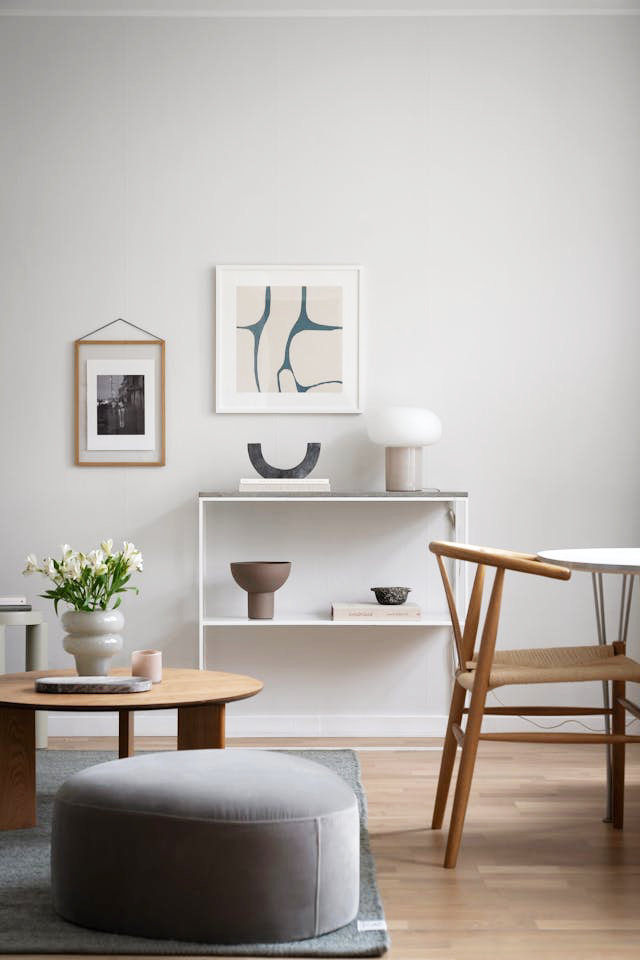
Negative space is your design ally. You don’t need to fill every corner to make a room feel complete. Open space lets your furniture breathe and creates a better sense of flow and calm.
Try floating your furniture off the walls to open up the layout. Use a rug to define the seating area and anchor the space.
Don’t rush to fill every blank wall—leave some space as is.
Want your living room to feel lighter, calmer, and more intentional? Start with just one or two of these ideas and build from there. Minimalist style is all about clarity—with a touch of cozy personality.
